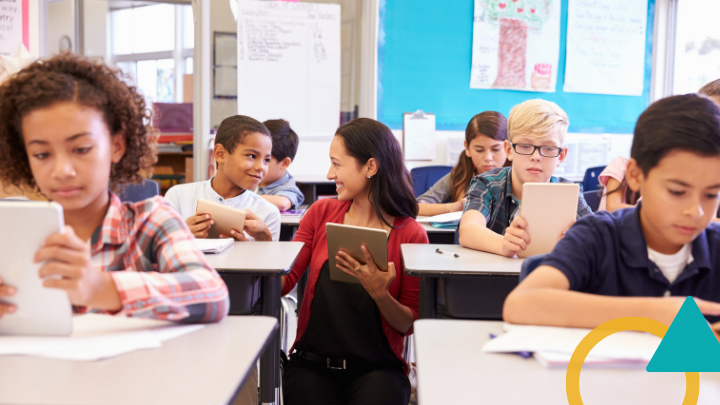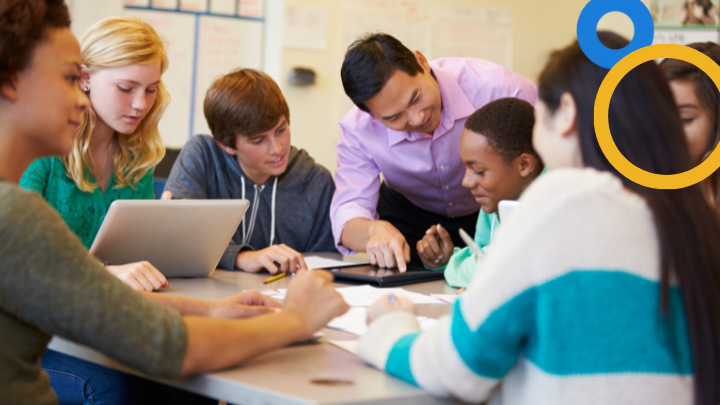As schools start to plan for next school year, student voice must be at the forefront of this conversation. Despite our longing to return to normalcy, we cannot simply go back to the way things were pre-pandemic. Our practices left behind too many of our students. Instead, we have a true opportunity to reimagine school for our students, with our students.
Our students’ voices are powerful and must be centered as we plan for the fall. This can happen by first asking students for their honest input and reflections on the past year and then by making them an integral part of the planning process for next year.
Why ask students for their input and collaboration?
It may seem obvious, but taking the time as a school community to articulate why you want student voice might be a first, grounding step as you plan for next year.
First and foremost, our students are the ones who were students during a global pandemic, not us. The first step in any design process is to empathize. We may think we know our students’ experiences, but there are so many ways
that our biases and assumptions get in the way. Students are the “clients” of whatever we design now.
We also know that when students are involved in their learning, the outcomes are better. Collaborating with students in designing processes for their school helps to ensure that it will actually work next year.
The high school I work at in Vermont worked with students to design our hybrid model this year. We sought input from students as we developed pods and redesigned schools around new COVID protocols. As a result, students are invested in the pod structure.
Similarly, at a school in Boston, students worked alongside teachers to plan a day of workshops centered around diversity, equity, and inclusion. The result was that students took real ownership of the work and the day of workshops became an annual tradition that students look forward to.
We have a unique opportunity to make school work for students. Engaging students in the process of this re-design work is key to its very success.
What do you ask? What do you want to know?
So, what do you ask students? Here is a list of potential questions to ask students to help inform school leaders as you plan for next year.
Kindergarten — 6th Grade:
- What did you like about learning at home this year?
- What has been the hardest part about learning at home for you this year?
- What do you miss about school before the pandemic?
- What do you hope school next year will be like?
- What are you scared about for school next year?
- What is one thing that you think adults should know about kids as they plan for next school year?
6th Grade — 12th Grade:
- What worked well for you this year?
- What was the hardest part of this year for you?
- What do you miss the most about school before the pandemic?
- What is something that you don’t miss at all from school before the pandemic?
- What is something about this year that you think school leaders should try to continue for next year too?
- What do you want school leaders to know about your experience during the pandemic?
- What do you think school leaders don’t understand about what it’s like to be a student at ____?
- What do you hope next year will be like?
- What is your greatest fear for what next year will be like?
Further, feedback protocols are an effective way to hear from students, such as the Fears and Hopes protocol, Seeking Authentic Feedback strategies, or the Future Protocol.
How? What are effective ways to solicit student voice?
The key to soliciting student voice is creating spaces for students to have an honest, ongoing dialogue with school leaders about what they want school to be like. One-off surveys by themselves are not the answer. Rather, it’s important to have a sustainable approach with clear, actionable follow-through. Consider:
- Surveys coupled with small focus groups and 1:1 interviews: Surveys are certainly the most efficient way to get a large quantity of data quickly. However, they must be paired with opportunities for students to go deeper and elaborate on their concerns.
- Listening tours that reach all students: The students that have disengaged in remote learning are not likely to click on a survey or respond to an email. We must find alternate ways to reach these students, whether that is a socially distanced porch visit at students’ homes or meeting at a local gathering spot. The students who have least engaged this past year should have a voice in the path forward. Read more about listening tours here.
- Restorative practices: Many schools have restorative circles or related practices, like “circle time” community conversations. These circles can be a powerful way to hear students’ voices in a trusting, safe environment.
- Reflecting on student voices in existing leadership practices: Many schools have students in leadership positions (school board, school committee, leadership teams etc.) Yet, too often, students feel like a figurehead without a real voice. It’s critical to ensure students’ voices are truly heard in these positions.
How to turn student voice into action?
The last thing a school wants is for all of this feedback to not take root. The key is this ask cannot just be once. True student voice must be ongoing. To turn student input into action, consider:
- Involving students in your planning committees for next year. Much of this planning will happen this spring and summer. Offering students a stipend to be part of this work demonstrates that you value their time.
- Ensuring student participation in planning for next year by building it into students’ days this spring. Consider a day-long series of workshops where students’ normal schedule is put on a hold and instead, students engage in design thinking for next year. Learn more about design thinking to improve schools here.
- Show students how you used their initial feedback so they know leaders are actually listening to them. Involve students in announcing new initiatives that they helped shape and celebrating outcomes that they contributed to.







